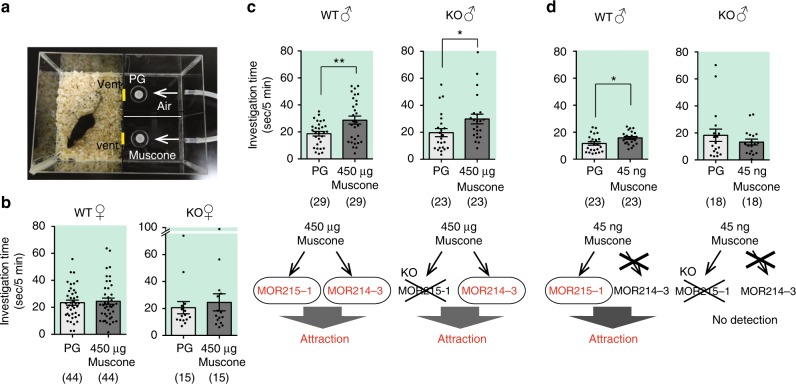Fig. 1.
Attraction to muscone via MOR215–1 and MOR214–3 in male mice. a Setup for the two-choice preference test. An individual test mouse is introduced into the room, and can poke its nose into either of two holes, from which muscone-containing air or control air (PG; propylene glycol) is constantly supplied. The total time spent the mouse spent nose-poking each vent hole was measured. b Investigation time for muscone (450 μg) in wild type or MOR215–1 knockout female mice: PG (propylene glycol) vs. 450 μg muscone dissolved in PG in C57BL/6 adult female mice (WT) (N = 44) and MOR215–1 knockout adult female mice (KO) (N = 15). c Investigation time for muscone (450 μg) in wild type or MOR215–1 knockout male mice. (top) PG vs. 450 μg muscone in PG in C57BL/6 adult male mice (WT) (N = 29) and MOR215–1-KO adult male mice (KO) (N = 23). (bottom) A possible model showing the involvement of two muscone ORs in attraction to 450 μg muscone. d Investigation time for muscone (45 ng) in wild type or MOR215–1 knockout male mice. (top) PG and MOR215–1-KO adult male mice (KO) (N = 18). (bottom) A possible model showing how 45 ng muscone activates only MOR215–1, leading to attraction. Bars indicate the mean time that a mouse spent investigating each test sample within a 3-min period, ±S.E.M. Asterisks indicate significant differences between two samples (paired Student’s t-test, *P < 0.05, **P < 0.01)

